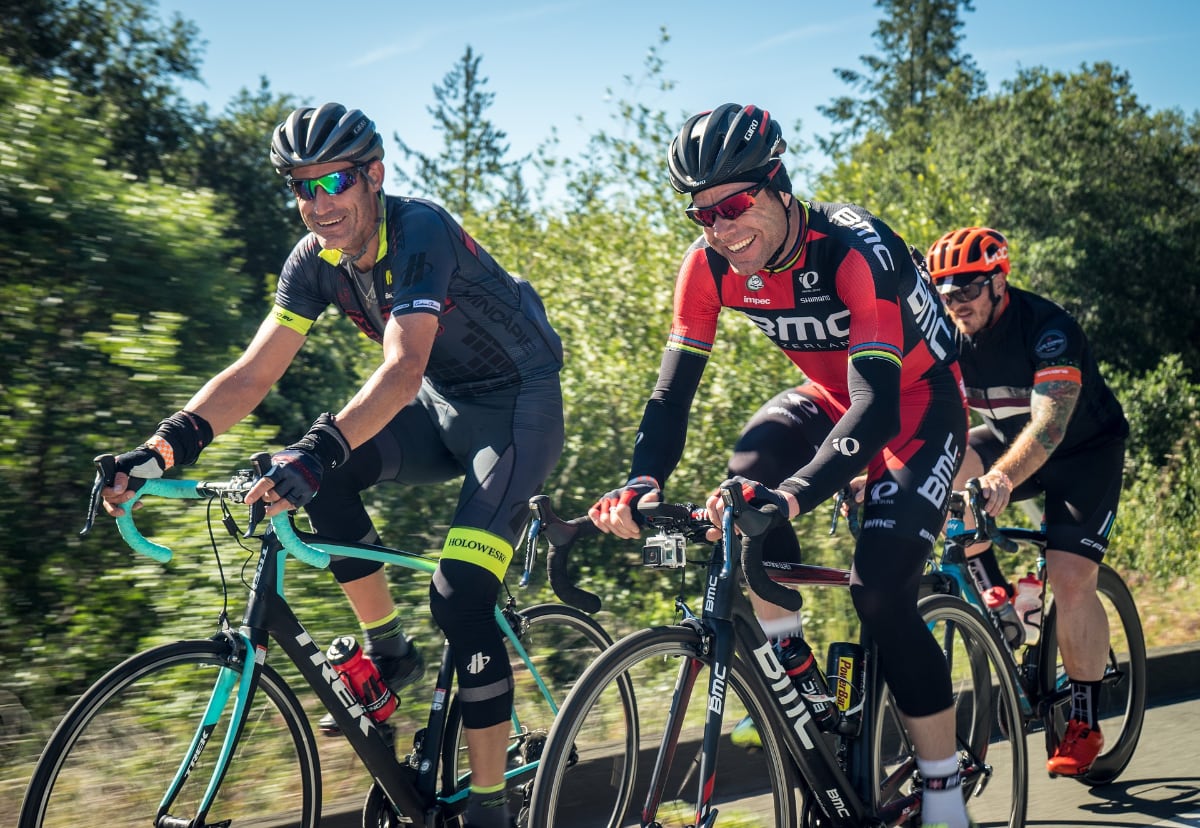
With over 5,000 pedal revolutions per hour, it is no wonder that some of the most common complaints reported by cyclists result from repetitive overuse. Reassessing your saddle height and handlebar positioning can be a great place to start managing your discomfort. Supplement your cycling with hip and core strengthening to help prevent your discomfort from developing into a clinical case.
The right saddle height for you:
Adjust the seat height so it is roughly level with your hip bones. Then hop on and position the pedals so that they’re level with each other, feet in 3 o’clock and 9 o’clock positions.
Take a look at your forward leg and imagine a line going from your knee downwards. Is your kneecap directly above the centre of the pedal? If the answer is yes, your seat is good to go.
Setting up your handle bars:
If you suffer from low back pain you may want to keep the handlebars slightly higher to avoid aggravating any lingering weaknesses. However, if you start with higher handlebars try to gradually lower them with each ride eventually reaching saddle height to boost overall workout efficiency.
After you’ve finished spinning, make sure you stretch the affected body segments to ensure proper recovery. A simple piriformis stretch and child’s pose can bring a great amount of relief to those worked areas!
On non-riding days, supplement with exercises which strengthen the hips and core. By strengthening these areas, the smaller supporting structures increase in stability settling current and future areas of irritability.
Core Exercises:
Front Plank – Assume a full push-up position. Option to remain supported with elbows extended under shoulders or to lower down to forearms. Regardless of the position you choose, ensure your bum doesn’t break the line from your head to the toes. No dipping or peaking! Tighten your belly button into your spine and hold for 1 minute, take a 30 second break and then repeat!
Mountain climbers – Assume the front plank position and alternate bending a leg and bringing the knee to your chest. See how many repetitions your can achieve in 30 seconds. Repeat three times and see if you can beat your previous numbers!
Glute Exercises:
Lateral Monster Walks – Place a mini band around the mid-portion of your feet (where your shoelaces might be) then squat down and side step joining the feet together each time. The lower your go, the more you will feel the burn! Lead with the right foot for 20 steps then go back leading with the left foot for 20 steps. Take a 1 minute break and repeat.
Banded Marching – Having the mini band looped around the feet across the mid-portion of the foot, stand with good posture and feet hip width apart. One at a time, bend the leg and bring the knee to the chest (in a marching fashion). Take a 1 second hold at the top of the marching position. Repeat 10 times on each leg, take a 30 second break, and repeat the set two more times.
Keep in mind that when you add new exercises you might experience delayed onset muscle soreness (DOMS). This muscle soreness presents itself 24-48 hours after and is normal to experience after adding new movement to your routine.
https://www.dwfitnessfirst.com/inside-track/fitness/cycling-like-a-pro-how-to-set-up-a-spin-bike/
https://www.bikeradar.com/road/gear/article/how-to-fix-5-most-common-causes-of-bike-pain-27605/


